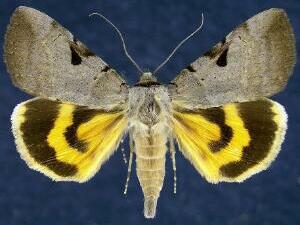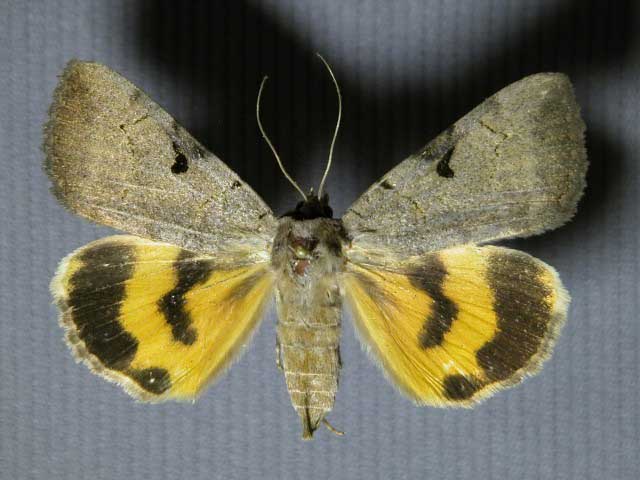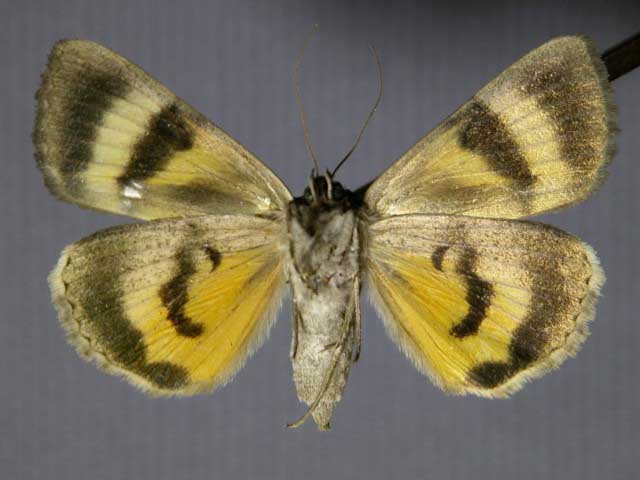Catocala nuptialis
Catocala nuptialis
kah-TOCK-uh-lah M
nup-SHEE-al-is
Walker, [1858]

Catocala nuptialis, Chalkrock, Cedar County, Nebraska,
August 10, 2022, courtesy of Scott Wehrly.
This site has been created by Bill Oehlke
Comments, suggestions and/or additional information are welcomed by Bill.
| TAXONOMY:
Superfamily: Noctuoidea
Family: Noctuidae
Group: Noctuinina
Subfamily: Catocalinae
Genus: Catocala, Schrank, 1802
|
DISTRIBUTION: | 
C. nuptialis courtesy of Jim Vargo. |
The reniform spot is very dark, black or almost black on an otherwise
faintly marked, almost uniformly grey forewing.
The outer black margin of the hindwing is unbroken, but is
indented near the anal angle.

Catocala nuptialis, Worthington, Nobels County, Minnesota,
July 20, 2008, courtesy of Tom Middaugh.

Catocala nuptialis, (verso), Worthington, Nobels County, Minnesota,
July 20, 2008, courtesy of Tom Middaugh.
FLIGHT TIMES AND PREFERRED FOOD PLANTS:
Catocala nuptialis are on the wing from late June to September.
The Catocala nuptialis caterpillar feeds on leadplant, and possibly
honey locust and oak.
ECLOSION:
Adults eclose from pupae at soil surface.
SCENTING AND MATING:
Catocala nuptialis females
emit an airbourne pheromone and males use their antennae to track the
scent plume.
EGGS, CATERPILLARS, COCOONS, AND PUPAE:
Eggs are deposited on
tree bark in the fall and hatch the following spring.
Larval Food Plants
Listed below are primary food plant(s) and alternate food plants.
It is hoped that this alphabetical listing followed by the common
name of the foodplant will prove useful. The list is not exhaustive,
although some species seem very host specific.
Experimenting with closely related foodplants is worthwhile.
Amorpha canescens.......
|
Leadplant
|
This page is brought to you by Bill Oehlke and the
WLSS. Pages are on space rented from Bizland. If you would like to become a "Patron of the Sphingidae/Catocala Sites",
contact Bill.
Please send sightings/images to Bill. I will do my best to respond to requests for identification help.
Enjoy one of nature's wonderments: Live Saturniidae (Giant Silkmoth) cocoons.

|

To show appreciation for this site, click on the flashing
butterfly to the left, a link
to many worldwide insect sites. |





